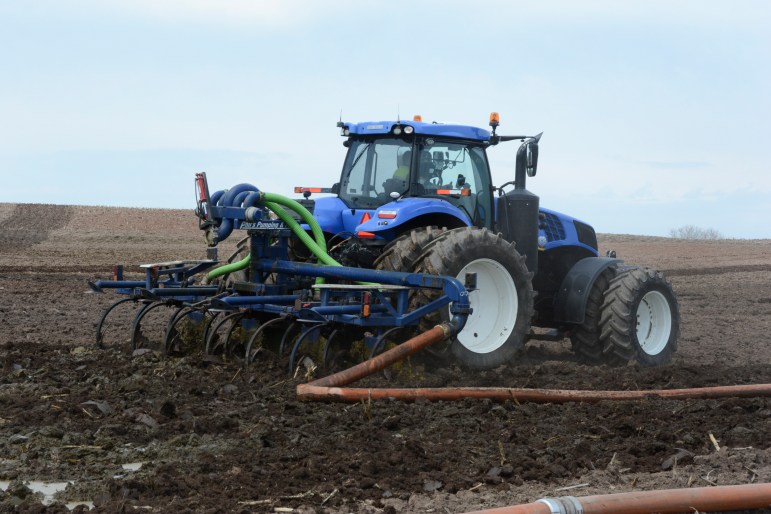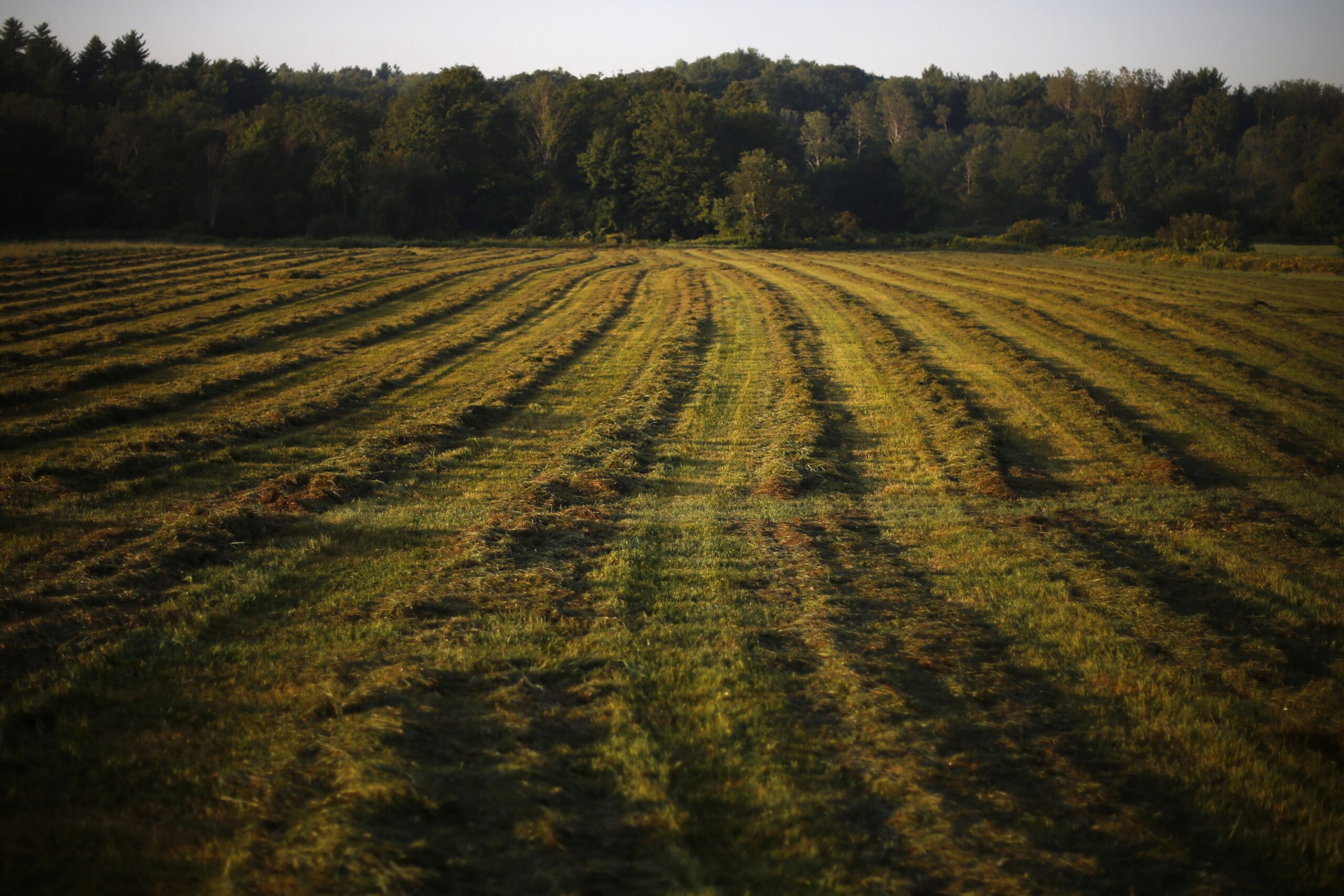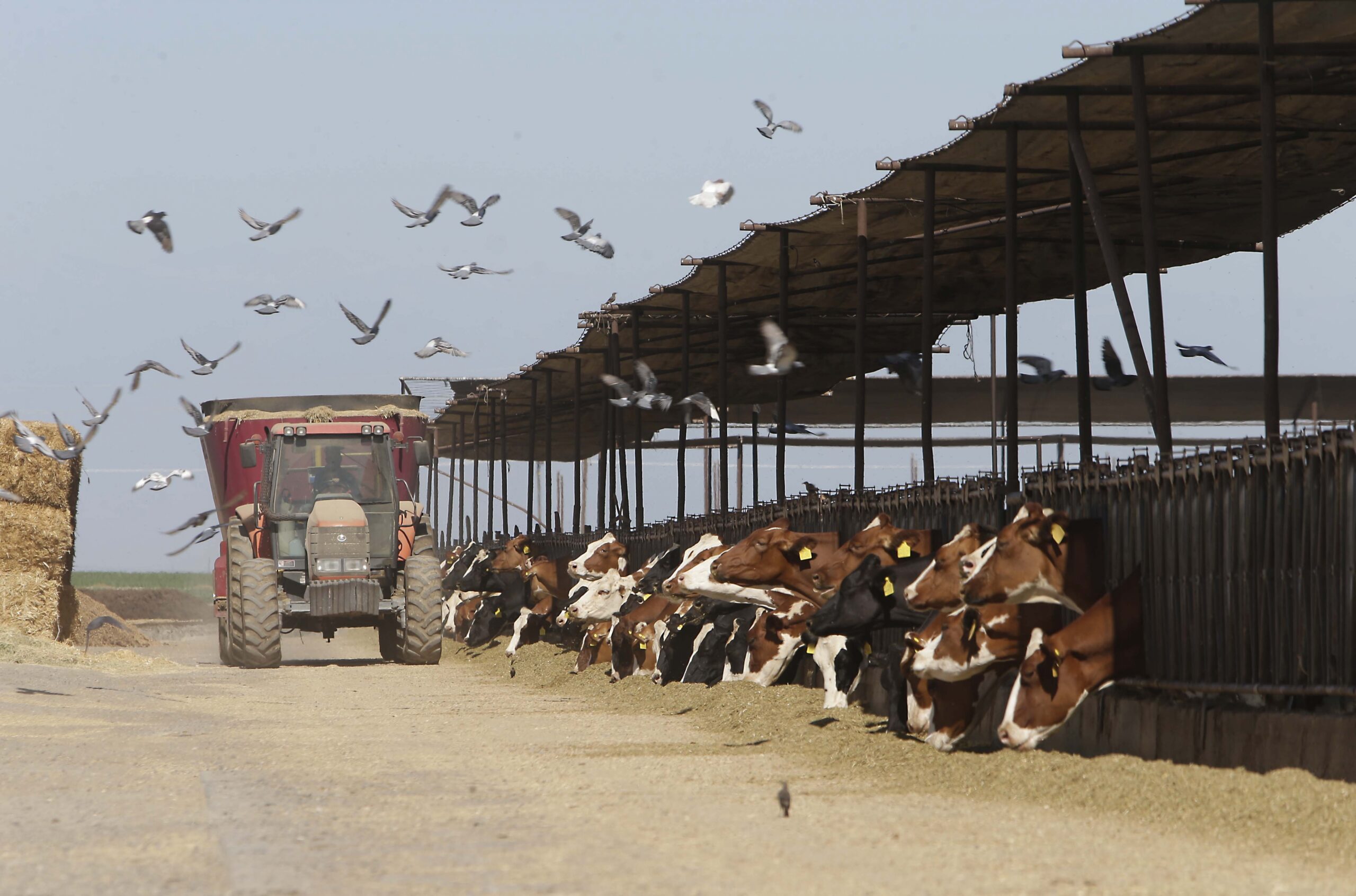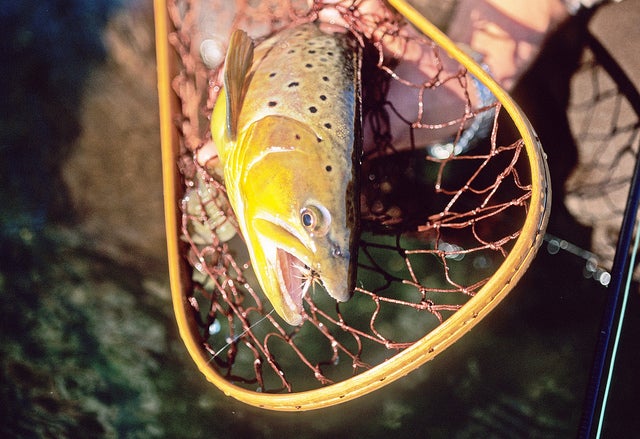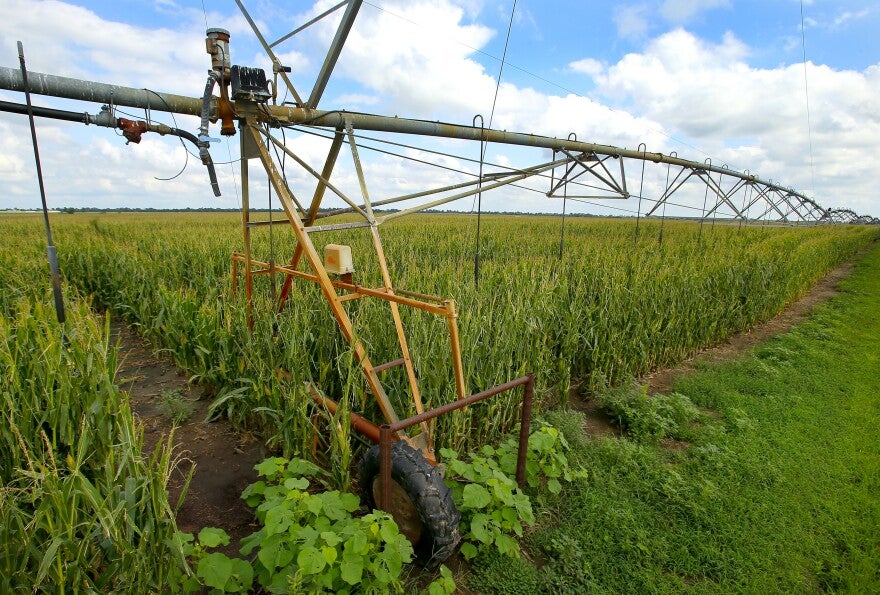A new report from environmental groups says too much manure and fertilizer is being spread on farmland to grow crops in some Wisconsin counties, polluting nearby waters.
Midwest Environmental Advocates and the Environmental Working Group began analyzing manure and fertilizer application rates in nine counties last year to understand how nutrients like nitrogen and phosphorus are being spread on fields. The nutrients are important for growing crops, but excessive amounts can harm water quality when nutrients seep into groundwater or wash into nearby waterways.
The groups examined counties with known groundwater issues or pollution stemming from nitrates and bacteria that include Kewaunee County, as well as counties in the Central Sands region and southwestern Wisconsin.
News with a little more humanity
WPR’s “Wisconsin Today” newsletter keeps you connected to the state you love without feeling overwhelmed. No paywall. No agenda. No corporate filter.
The report found nitrogen from manure and fertilizer exceeded rates recommended by University of Wisconsin scientists in eight of the nine counties. In four counties, nitrogen from the two sources went more than 50 percent beyond proposed rates, including Kewaunee County where it was applied at nearly double recommended levels. Residents there have long struggled with nitrate contamination of private wells.
“That aggregation of nutrients is likely leading to both groundwater contamination and surface water contamination,” Adam Voskuil, the report’s co-author and a staff attorney with Midwest Environmental Advocates, said.
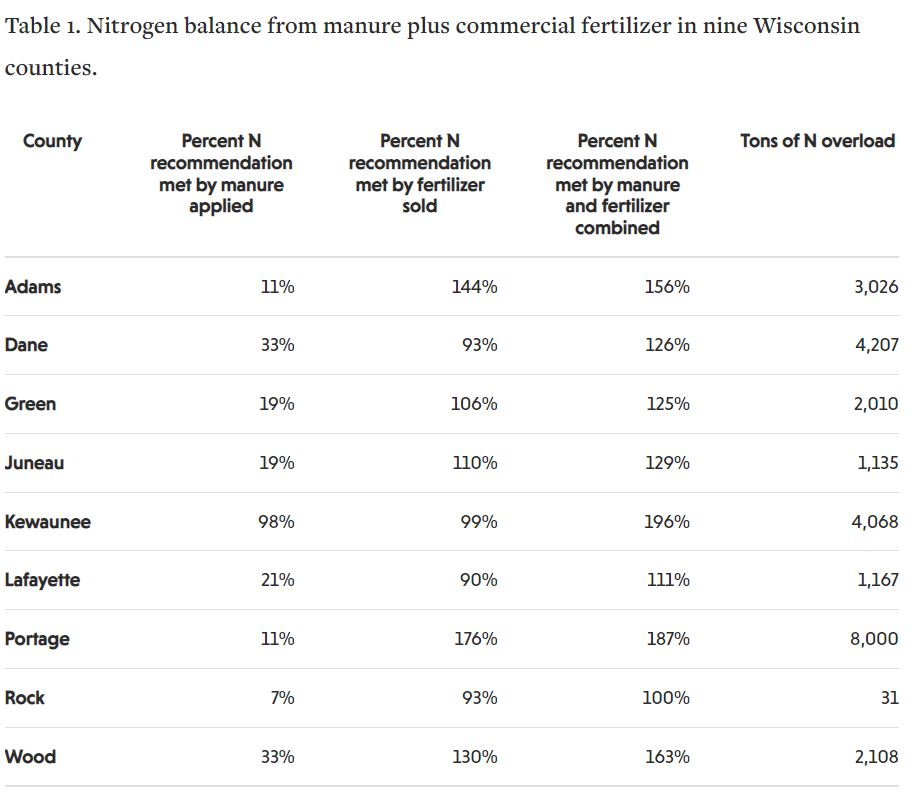
Phosphorus in manure and fertilizer also surpassed the suggested rates in Kewaunee, Adams and Portage counties.
According to the report, more than 1,500 miles of streams and rivers along with 33 lakes are listed by the state as impaired across the nine counties. The groups contend that’s due in large part to pollution from manure and fertilizer.
To arrive at their findings, the report’s authors used satellite images to map nearly 90,000 farm fields to determine where and how many nutrients were likely to be spread from manure produced by 1,901 livestock farms that were identified.
The amount of nutrients from manure in those counties were combined with an estimated amount of nitrogen and phosphorus in fertilizer sold. Sales were based on state figures that were divided up using county-level data from national agriculture statistics.
Nearly 20,000 tons of nitrogen and 17,000 tons of phosphorus in manure are produced by the farms across the nine counties each year, according to the report. Meanwhile, fertilizer sales have grown statewide from 161,000 tons in 2004 to 345,000 tons in 2018.
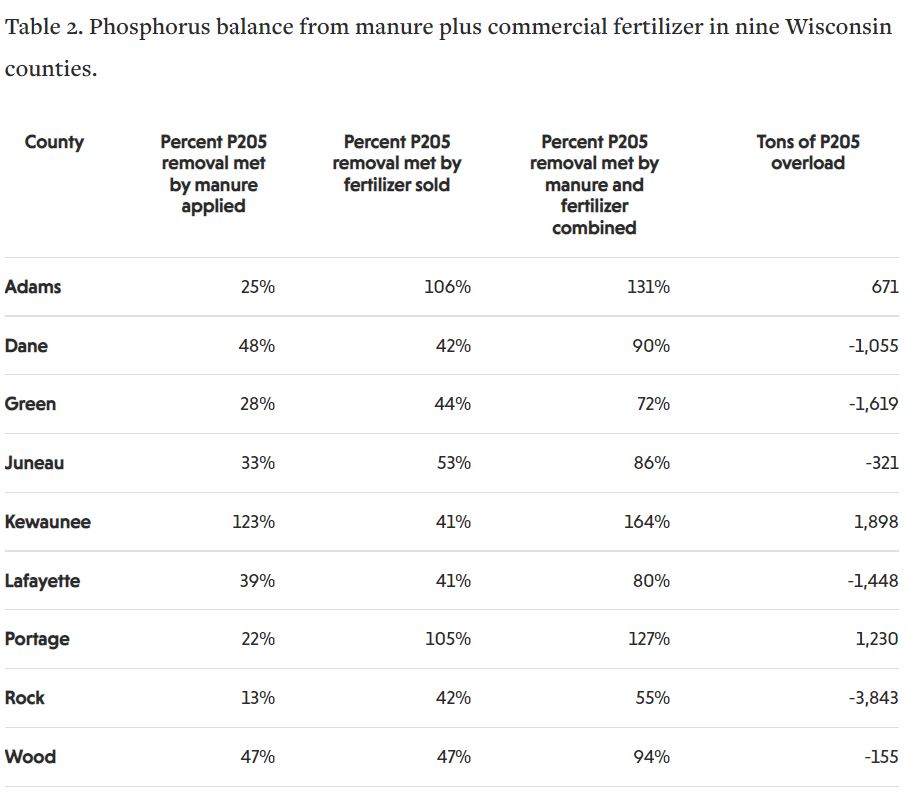
When asked whether manure produced and fertilizer sold corresponds to actual amounts spread on fields, Voskuil said the groups grappled with that question.
“At some point, that manure needs to be managed,” he said. “You can’t just store it forever.”
He added that a recent UW economic analysis found most manure is likely to be spread about a half-mile from farms. In parts of Dane and Kewaunee counties, the report found there’s too much manure for fields to accept without leading to water pollution unless it’s trucked to land further away.
Across the nine counties, the groups say 64 percent more cropland would be needed to avoid placing too much phosphorus on the land.
The methods used in the report are sound and consistent with other research in the state, according to Eric Booth, an associate research scientist in the departments of Agronomy and Civil Engineering at UW-Madison.
While the report hasn’t been peer-reviewed, Booth said it fills in gaps on lacking data about nutrients applied to farmland. He said most research has focused on the risk of nutrient runoff into waters when it rains rather than the supply of nutrients.
“The data that we have, and the evidence that we have shows that, yeah, there are some counties that have a lot of excess nutrients that make it challenging to improve water quality,” said Booth.
The report acknowledged data is limited at the local level, noting fertilizer sales and application rates were unavailable by county.
The groups added that two thirds of the manure generated by farms in the nine counties originates from smaller operations that aren’t permitted. That means they aren’t required to develop nutrient management plans unlike large, permitted farms known as concentrated animal feeding operations. More than 7,800 plans cover around 36 percent of Wisconsin cropland, according to state data.
While CAFOs make up less than 3 percent of farms identified across the nine counties, the report’s authors say they produce around one third of manure spread on fields.
Voskuil said the amount of manure produced by CAFOs raises questions about safely applying it on land as operations expand and the number of CAFOs has grown to more than 300 statewide.
Tim Trotter, CEO of the Dairy Business Association, said that farmers are working to address water quality challenges.
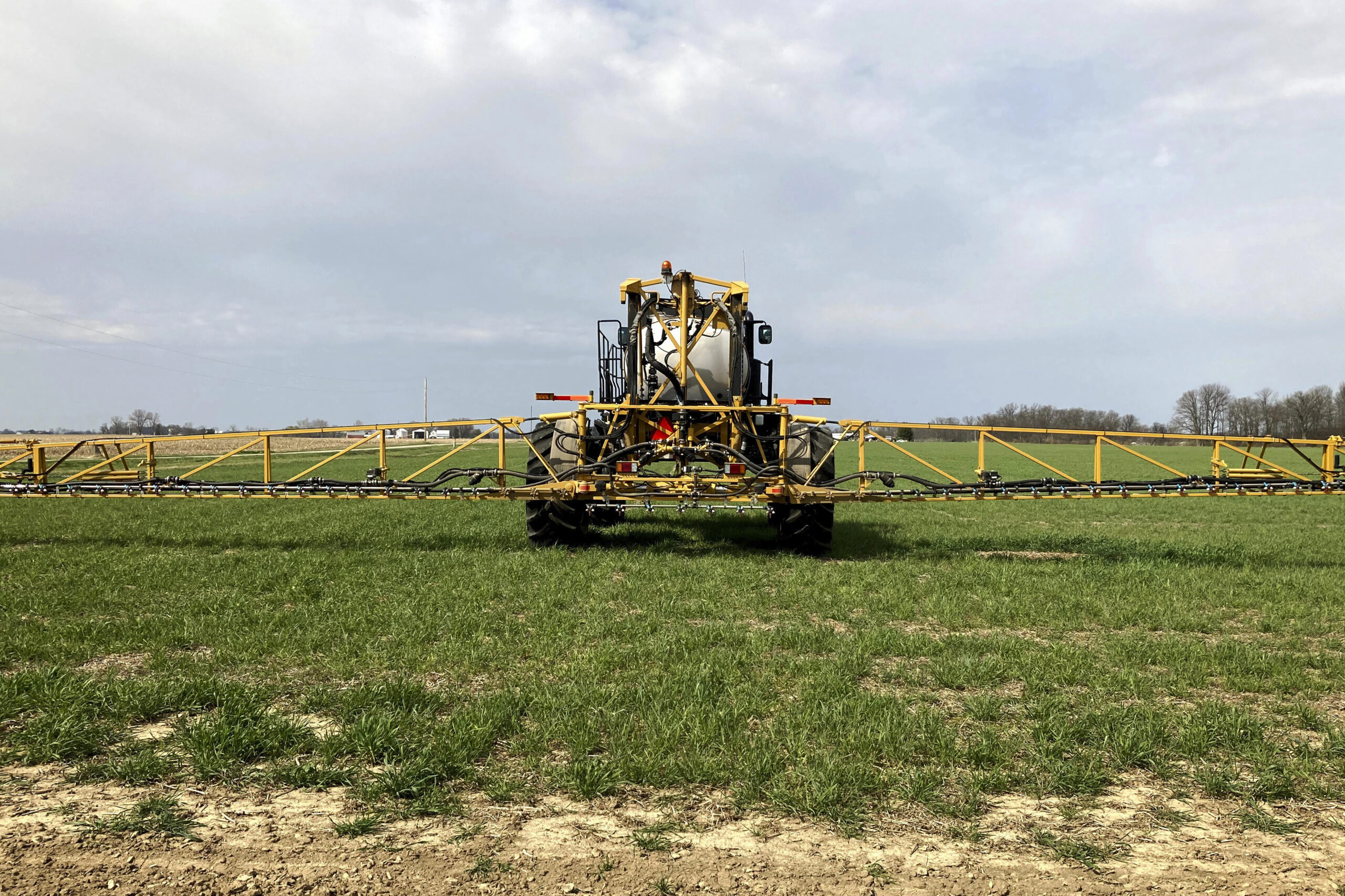
“One only need to look at the growing network of voluntary farmer-led conservation efforts across the state — encompassing hundreds of thousands of acres and livestock — to see the commitment,” Trotter wrote in an email. “Farms of all sizes are participating, and current data is showing progress in keeping nutrients for crops in place where they are needed. This is a science-based journey of continuous improvement.”
Nitrates are the state’s most widespread contaminant and have been associated with birth defects, thyroid disease and colon cancer. Research has shown around 10 percent of the state’s 800,000 private wells that provide drinking water to a quarter of the state’s residents exceed federal health standards for nitrates.
Around 90 percent of nitrogen in groundwater can be traced back to agriculture.
Dairy and environmental groups have urged lawmakers to provide funding to support farms in protecting drinking water. They’ve lobbied for increased funding for county conservation staff and cost-share assistance for conservation practices that reduce runoff. They’re also backing bills that would help people address nitrate-contaminated wells and aid farmers with optimizing the use of nitrogen fertilizer on their land.
Wisconsin Public Radio, © Copyright 2026, Board of Regents of the University of Wisconsin System and Wisconsin Educational Communications Board.

